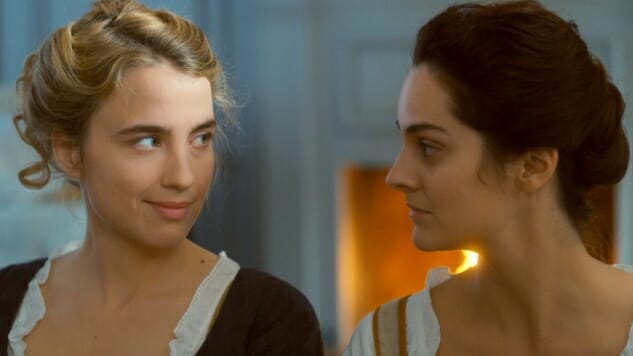Portrait of a Lady on Fire Inverts the “Artist and Muse” Trope—and then Obliterates It

Part confessional, part fantastical and burning with underlying eroticism, French director Céline Sciamma’s Portrait of a Lady on Fire relishes in the far-reaching history of women—their relationships, their unique predicaments, the unrelenting bond that comes with feeling uniquely understood—while also grappling with the patriarchal forces inherent in determining the social mores that ultimately restrict their agency.
The film, which takes place sometime before the French Revolution in the late 18th century, introduces us to Marianne (Noémie Merlant), an artist commissioned to paint the portrait of an aristocratic young woman named Heloïse (Adèle Hannel), who has been removed from her studies at a convent after her sister’s death on a remote island in Brittany. Heloïse’s portrait, once completed, will be sent to Milan—where her suitor will covet it until his betrothed arrives.
Completely resistant to the idea of marriage, Heloïse has sabotaged previous attempts at painters capturing her portrait, leaving Marianne with a difficult assignment. She must not reveal to Heloïse that she has been tasked with painting her, instead posing as a companion for afternoon walks, memorizing the details of Heloïse’s features and toiling on the portrait in secret.
But Portrait of a Lady on Fire is not another trite meditation on the relationship of an artist and a muse—Heloïse is less muse than a landscape that Marianne must carefully study and quickly replicate if she wants to receive the handsome sum she has been promised. Hands, fingernails and the intricacies of the ears are less inspiration than pesky attributes that must be elegantly conveyed.
Actually, it’s Marianne’s straddling of the roles of artist and companion that allows Heloïse’s personality to envelop Marianne’s thoughts—she is not a still life, but rather a complicated woman whose plight ultimately becomes sympathetic to the painter. She begins to feel conflicted about the very art that she is creating, knowing that it will result in the loss of Heloïse’s personal freedom.
-

-

-

-

-

-

-

-

-

-

-

-

-

-

-

-

-

-

-

-

-

-

-

-

-

-

-

-

-

-

-

-

-

-

-

-

-

-

-

-








































